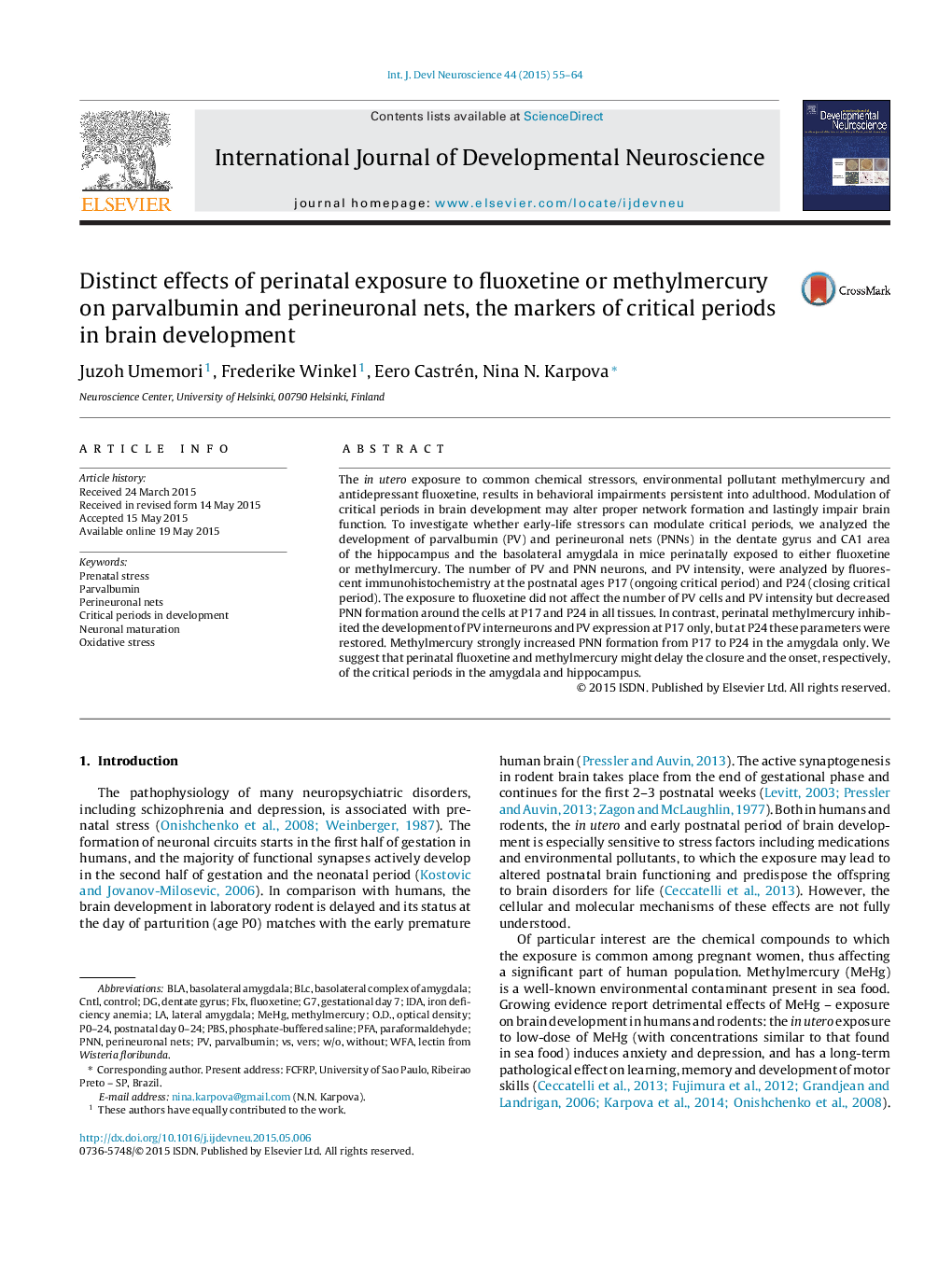| کد مقاله | کد نشریه | سال انتشار | مقاله انگلیسی | نسخه تمام متن |
|---|---|---|---|---|
| 2785847 | 1568387 | 2015 | 10 صفحه PDF | دانلود رایگان |
• In utero exposure to chemical stressors may affect the critical periods in the amygdala and hippocampal development.
• Perinatal fluoxetine decreases the formation of perineuronal nets in young mice.
• Perinatal methylmercury inhibits the development of parvalbumin interneurons.
The in utero exposure to common chemical stressors, environmental pollutant methylmercury and antidepressant fluoxetine, results in behavioral impairments persistent into adulthood. Modulation of critical periods in brain development may alter proper network formation and lastingly impair brain function. To investigate whether early-life stressors can modulate critical periods, we analyzed the development of parvalbumin (PV) and perineuronal nets (PNNs) in the dentate gyrus and CA1 area of the hippocampus and the basolateral amygdala in mice perinatally exposed to either fluoxetine or methylmercury. The number of PV and PNN neurons, and PV intensity, were analyzed by fluorescent immunohistochemistry at the postnatal ages P17 (ongoing critical period) and P24 (closing critical period). The exposure to fluoxetine did not affect the number of PV cells and PV intensity but decreased PNN formation around the cells at P17 and P24 in all tissues. In contrast, perinatal methylmercury inhibited the development of PV interneurons and PV expression at P17 only, but at P24 these parameters were restored. Methylmercury strongly increased PNN formation from P17 to P24 in the amygdala only. We suggest that perinatal fluoxetine and methylmercury might delay the closure and the onset, respectively, of the critical periods in the amygdala and hippocampus.
Figure optionsDownload high-quality image (212 K)Download as PowerPoint slide
Journal: International Journal of Developmental Neuroscience - Volume 44, August 2015, Pages 55–64
